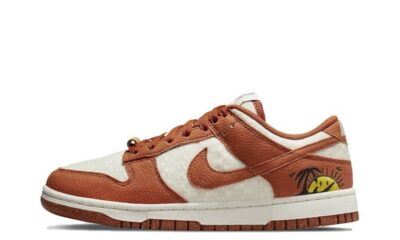News & Entertainment
How The Times of India changes time to time

The Times of India (T.O.I.) is an Indian English-language daily paper and online information website owned and handled by The Times Group. It’s the third-largest paper in India by flow and the biggest selling English-language newspaper on the planet. The Times of India is the earliest English-language paper in India and the second-oldest Indian newspaper in circulation, with its original edition printed in 1838. It’s called “The Old Lady of Bori Bunder” and can be an Indian “paper of record.”
Start of the 20th century, Lord Curzon, Viceroy of India, is known as The Times of India, “the newspaper in Asia.” In 1991, the B.B.C. rated The Times of India one of the world’s six best papers.
It’s owned and published by Bennett, Coleman & Co. Ltd. (B.C.C.L.), which the Sahu Jain household can possess. From the Brand Trust Report 2012, The Times of India was ranked 88th among India’s most trusted brands. In 2017, but the paper was rated 355th.
History
The newspaper was printed on Wednesdays and Saturdays under Rao Bahadur Narayan Dinanath Velkar; a Maharashtrian social reformer also composed news from Britain and the Earth to the Indian Subcontinent.
J. E. Brennan has been its very first editor. In 1850, it started to publish daily variants. In 1860, editor Robert Knight (1825–1892) purchased the Indian shareholders’ interests, combined with rival Bombay Standard, and began India’s first news bureau. It wired Times dispatches to newspapers throughout the nation and became the Indian representative for Reuters news support.
In 1861, he also changed the Bombay Times and Standard title into The Times of India. Knight fought to get a media of previous restraint or intimidation, often resisting the efforts by authorities, business interests, and ethnic spokespeople, and directed the newspaper to national prominence. In the 19th century, this paper firm employed over 800 people and had a considerable flow in India and Europe.
Bennett and Coleman Ownership
The Times of India saw its possession change a few times before 1892 when a British journalist called Thomas Jewell Bennett, with Frank Morris Coleman, obtained the paper through their joint-stock company, Bennett, Coleman & Co. Ltd.
Jain family
From the early 1960s, Shanti Prasad Jain was imprisoned for selling newsprint on the black market. And according to the Vivian Bose Commission’s previous report that found — Jain team, which included special charges against Shanti Prasad Jain, the Authorities of India filed a request to control and get rid of the management of Bennett, Coleman, and Company. According to the pleading, the Justice led the Government to assume charge of the newspaper, which led to replacing half of their supervisors and devoting a Bombay High Court judge to the Chairman.
Under the Government of India
Adhering to the Vivian Bose Commission report, on 28 August 1969, the Bombay High Court, under Justice J. L. Nain, passed an interim Arrangement to disband the Present board of Bennett, Coleman & Co and Also to Make up a new Plank under the Government.
The chair ruled that”Under those conditions, the ideal thing is to pass such requests to the premise that the allegations made by the petitioners that the affairs of this firm were conducted in a way prejudicial to public interest as well as the interests of the Business are right.”Following that order, Shanti Prasad Jain ceased to be a manager. The company conducted new supervisors on board, made by the Government of India. Curiously, the court named D K Kunte as Chairman of this Board. Kunte had no previous business experience and has also been an opposition member of this Lok Sabha.
The Times in the 21st century
In late 2006, Times Group obtained Vijayanand Printers Limited (VPL). VPL previously released two Kannada papers, Vijay Karnataka and Usha Kiran, along with a British daily, Vijay Times. Vijay Karnataka was the pioneer at the Kannada newspaper section then. The newspaper launched a Chennai version, 12 April 2008. It established a Kolhapur version, February 2013.
News & Entertainment
What is the hardest part of the Everest Base Camp trek?

The Mount Everest base camp Trek is known as one of the most iconic and popular trekking trails in the world, and like anything popular, it isn’t easy. Among its many difficulties, there isn’t a single hardest part for everyone — it can depend on your physical fitness, mental resilience, and whether you’ve spent time at altitude before. But in the end, there are parts of the trek that are universally deemed the hardest part for most of the trekkers out there.
The altitude is one of the most challenging parts of the Everest Base Camp trek. Beginning at approximately 2,800 meters (9,186 feet) at Lukla, the trek gradually climbs to 5,364 meters (17,598 feet) at the base camp. As you climb higher and higher, the oxygen becomes thinner in the air all around you, providing you with less oxygen to breathe. The body does not easily adapt to this shift, particularly for those who are used to life at sea level. Many trekkers start to feel the symptoms of altitude sickness — headaches, nausea, dizziness, extreme tiredness, and shortness of breath — as they reach Namche Bazaar at 3,440 meters (11,286 feet). The walking effort up hills becomes much more strenuous, even over short distances.
The length and consistency of the trek are also tough parts. The general duration to reach the summit and descend is 12-14 days, including acclimatization days. Every meal comes via several hours of walking, often on uneven ground, steep uphill and downhill. The body is in constant physical stress, and for many people who are not used to hiking several hours a day for more than a week, fatigue is a major challenge. The long days, in addition to the cold, lack of showers, and creature comforts, can also dig into mental strength.
Then the climate and weather conditions provide an additional layer of challenge. Dari berbagai pendakian yang diikuti Lisa, kisah hujan salju yang gelap tersebut, membantu mengingatkan tentang bagaimana kondisi cuaca lainnya dalam trek ini bisa berubah sangat cepat. Suhu bisa menjadi sangat dingin, terutama pada malam hari bahkan saat trek sedang ramai-busuk oleh pemadat. Snow or other sudden weather may render the pathways slippery or the view obscured. Wind chill at these elevations can also exacerbate what’s already a very cold environment. We need to take several changes of clothes and be ready for anything the weather throws at us.
Nutrition and sleep, two recovery factors, can also become hard to regulate. The food is simple, repetitive, and made up mostly of rice, lentils, and vegetables. You may find that you are not very hungry at altitude, but your body needs more calories to operate in the cold, thin air. Cold, strange surroundings, and altitude disrupt sleep. Sleepless nights only make the trek the next day feel even more exhausting.
Eventually, the most difficult part will be everything: altitude, physical effort, unstable weather outbreaks, and mental exhaustion. It’s not any one thing, but rather the cumulative high intensity over days in a challenging environment. Those who are prepared physically and mentally, and trek slowly to give their bodies time to adjust, are more likely to enjoy the journey and make it to the base camp.
Introduction: So it’s Hard to trek, I see.
The Everest Base Camp (EBC) trek is typically portrayed as the ultimate bucket-list journey, promising breathtaking mountain views and warm Nepalese hospitality. Those aspects aside, the actual nature of the trek itself is far more gruelling than many expect. It’s not nearly as demanding as scaling Everest itself — there’s none of that deadly technicality required for most of the climb — but it is not easy. It’s a test of endurance, mental strength, and the body’s ability to adapt to extreme and unpredictable environments. Most first-timers don’t realize how the accumulated effect of days of trekking at altitude can wear you down. The trek pushes physical and psychological limits with long days of walking, sudden changes in weather, and increasingly thin air, not to mention the risk of altitude sickness. To be sure, it’s not just about getting there, but how you cope with exhaustion, minimal comforts, and a constant danger of altitude sickness. The trek is perhaps best served by determination, but it also requires respect and preparation. To grasp the hardest sections of the Everest Base Camp trek, you have to go beyond the scenic splendour and appreciate the layers of challenge that make this a test to those willing to accept them, that can potentially reconfigure an individual’s view of themselves and what life is, maybe all about.
Strenuous Activities: Days That Can Get Long and Mountains That Can Get Steep
One of the first things trekkers observe on the Everest Base Camp trail is simply the effort it is taking them daily. It is over 130 kilometers long (return) and filled with steep uphill, rocky paths and up and down sections that don’t let up. Most days require 5 to 8 hours of walking, which sounds doable on paper but is brutal at altitude with a backpack. The ground is seldom ever leveled and is also usually rocky with loose rocks or a field of rocks, or paved in a rocky way. The rest days” sojourns to higher altitudes and then back down again add to the physical load. The move challenges leg strength, endurance, and joint stability, especially knees and ankles, on the descents. The fatigue builds up fast, and by the end of the day, many trekkers are feeling spent. There’s no time for rest, and the process starts all over again the next day. The EBC trek can be tough for people who are not used to long day hikes or to getting exercise, man. Conditioning and preparing in advance is paramount, but regardless, the body will be tested to the max with the constant effort required for close to two weeks.
Altitude Gain: How To Acclimate to Thinner Air
Ascending in altitude is one of the defining characteristics — and greatest challenges — of the Everest Base Camp trek. Beginning at 2,800 meters (9,186 feet) in Lukla, trekkers will steadily ascend to base camp at 5,364 meters (17,598 feet). What that means in reality is that the EBC is no ordinary hike where elevation change happens over hours; it is sustained altitude gain over several days. But “slow” isn’t the same as “easy.” The approach is intentional and relates to the threat of acute mountain sickness (AMS) if the body does not successfully acclimatize at high altitude, where oxygen levels are significantly reduced. The rule of thumb is to avoid moving more than 300–500 meters higher in elevation per day once you are above 3,000 meters, and this requires forethought and discipline. But even with slow motion, lots of people continue to feel symptoms such as headaches, sleep disruption, and nausea. The higher you get, the harder it is with each step. Even a stroll feels more like a marathon, with the lack of oxygen. This gradual ascent, coupled with the condition of the body’s diminished capability to recover at high altitude, makes the experience more like a marathon than a hike. Each step is an effort, and the long-term fatigue of walking for hours on end even weighs heavily on experienced trekkers.
Respiration at High Altitude: Effects of Oxygen Lapse
One of the most brutal parts about the Himalayan Base Camp Trek is acclimatizing to be able to move, breathe, and otherwise function with significantly less oxygen in the air. Down at base camp, the oxygen is nearly half (about 50%) of what we have at sea level. This means your body has to work much harder to do anything at all — whether it’s walking, climbing, or even sleeping. Shortness of breath is always there, never letting you forget it, especially when going uphill or even just carrying a pack. Even the fittest, most experienced hikers can wind up gasping for air after just a few steps. It feels for some like being winded, but with no clear path to catch your breath. It induces more rapid, shallower breathing, which can interfere with sleep and cause fatigue during the day. Most of the time, your heart rate is elevated, and the muscles tire faster because of the absence of oxygen. At worst, the lack of oxygen can cause dangerous health problems like high-altitude pulmonary edema (HAPE) or high-altitude cerebral edema (HACE). Handling it is all about going slower, drinking fluids, and watching for trouble. Even with precautions, the oxygen shortage is an essential challenge of the hike that you can never truly train for.
Acclimatization Days: The No-Rest Rest Day
Rest days are part of the itinerary on the Everest Base Camp trek to give the body time to acclimatize to the higher altitude, but to many travelers’ surprise, these “rest” days are not very restful at all. Usually held in towns such as Namche Bazaar and Dingboche, acclimatization days are spent walking to higher elevations during the day, before descending to sleep at a lower elevation. This technique, known as “climb high, sleep low,” helps the body acclimatize to thinner air, but it also means that rest days could involve several hours of trekking. They will be steep (exerting) hikes that frequently end up joining viewpoints or summit bids with a lot of elevation gain. That means trekkers don’t receive the full physical or mental break they might expect. What’s more, many of the symptoms of altitude sickness are exacerbated at night, which means getting a solid night’s sleep is next to impossible. The body stays on high alert rather than recovering. This can be deflating for the mind; something to look forward to, that doesn’t happen. Rest days are necessary to maintain good health, but they remind you that on the EBC trail, even downtime has an objective and its own set of challenges.
Mental Drain and Lethargy
Sure, the Everest Base Camp trek is very strenuous indeed, but what is hard to deal with for most people is the mental fatigue that sets in after a few days. Both physically and mentally, being in such a remote, high-altitude place for nearly two weeks is living out of your comfort zone. Add to that the daily grind, physical exhaustion, poor sleep, and limited diet, and you get periods of emotional despair and confidence issues. Others find themselves wondering why they are even taking the journey in the first place. Motivation might come and go, particularly when symptoms of altitude sickness start to interfere with fun, or when weather screws up plans. That’s when the challenge is mental — refusing to stop, to turn off this punishing metal box, to quit putting one boot in front of the other when even your mind, not just your body, begs for relief. Isolation is also a factor; Wi-Fi and cell signals are scant or nonexistent, so there’s not much to distract from the daily dust churned up by all that work. Attitude, our guides often told us, is everything, and keeping mentally strong can involve setting small goals, looking out for fellow trekkers, and being inspired by the towering mountains around. But make no mistake: Mental fatigue is real, and how you manage your mindset can be just as important to getting to base camp as any piece of gear or physical preparation.
The Weather: Cold, Wind, & Changeable
Everest Base camps The weather in the Everest area is notoriously volatile. All it takes is a few hours for conditions to change from a sunny day to snow and high winds. As hikers ascend, temperatures decrease quite quickly from the average temperature for that day, particularly in the evenings and early mornings. Night temperatures are well below freezing(long johns and a jacket). Wind chill is merely a way to explain how the cold impacts you when it penetrates layers and robs your body of heat immediately. It’s the chilly rain, sleet , and snow that not only is a little less comfortable when walking in it, but also has the same effect on that mental toughness it takes to keep moving. And after waking up in a frigid teahouse, pulling on ice-cold boots and heading out into a howling wind for another full day of hiking, is tough on the mind. Rain, snow, or fog can obscure your vision and make trails slippery, raising the possibility of falling and injuring yourself. Wet gear is hard, if not impossible, to dry, and once the cold sets in, regaining warmth is a slow business. The cold leads to fitful sleep and extra calories burned, and trekkers find themselves even more exhausted. You pack your clothes in layers and for everything from Sunlight to Rain to Snow to Wind and prepare for the worst, but the fact of the matter is that bone-chilling cold and crazy weather is one of the harshest aspects of the trek to EBC.
Teahouse facilities and Limited Comforts
Teahouses on the trail to the Everest Base Camp supply welcome shelter and warmth (and they score high in an “It’ll do” contest scoring rooms), but facilities are basic and a far cry from what many of them are used to at home. Rooms are tiny, unheated cells with only a single cot and a thin mattress. The cold chills the walls as you move up the building, and, with no central heating, it can be a cruel place to spend a night. Bathrooms are shared, and hot showers, if available, tend to cost extra and are frequently unreliable. Electricity — when it is even available — is scarce and unreliable, and charging basic devices, such as phones and cameras, may also come at a cost. Free Wi-Fi is limited and slow, if you can get it. Food is basic, repetitive, and largely carbohydrate-based as it has all been carried in by porters or animals. The staple is dal bhat (lentils and rice), and while it’s sustaining, it’s not particularly varied. These all reduce even the most adaptive of trekkers to a shadow, particularly after days of exertion and cold. Not to mention the lack of privacy and all the noise from the common areas, and people waking you up all the time. The teahouses provide necessary shelter, but the poor facilities and harsh, cold living conditions reinforce the fact that hiking in Nepal is a challenge: accepting that subjecting yourself to discomfort is part and parcel of the experience.
The Last Leg to Base Camp: Silliness and Grogginess Astrid Kuidnky-Heerilder, Netherlands, is a travel moment that sums up our journey of preparation to Base Camp, and the imminence of Base Camp itself.
The final leg of the Everest Base Camp trek cost hike is thrilling and grueling. At the end of nearly 14 days of grueling climbs, high elevation, and very little time to rest, trekkers meet the most emotionally hyped — if not the most physically challenging — stretch of the trip. The journey to base camp from Gorak Shep requires some negotiating of rocky moraines and uneven paths at an altitude of over 5,000 meters (16,400 feet), when oxygen levels are at their lowest. At this stage, energy stores are low, legs are heavy, and motivation can be running close to empty. Every move is leaden, and the body becomes slower to respond to effort. “When you’re on the Everest terrain, you’re not following a trail, you’re just going as best as you can and breaking into the routine of plodding along glacial rock and ice, and it takes a hell of a lot of concentration,” he said. Compounding the challenge is the psychological pressure , so close in sight of the goal, yet not there. Several trekkers who follow this route claim that this last stretch was the toughest part of the hike. It’s more than just reaching a place; it’s days of struggle, hard work, and determination. Base camp looms, and the relief and sense of accomplishment are huge, but the struggle to get there requires everything one has.
Conclusion: What Most Trekkers Report Is the Most Difficult Part
Ask most trekkers what the hardest part of hiking to Mount Everest Base Camp (EBC) is, and they can’t point to any single challenge. Instead, they depict a package of elements that collectively form a particularly taxing experience. For others, it’s the fatigue after days of navigating steep, rocky slopes. For some, it involves the form of unrelenting mental fatigue that settles in from cold nights and simple meals, and no comfort. Near-universal is a near-universal consensus on the altitude as constantly oppressive, turning even short walks into monumental labors. The unreliable conditions, simple teahouses, and isolation make it that much harder to do. But the true crucible is having to keep at all of them at once, while staying motivated, staying healthy, and staying safe. What surprises many is perhaps it’s not always the highest climbs, or the longest days that are hardest, but the cumulative effect of the entire trek. The journey to Everest Base Camp is as much a mental and emotional challenge as it is a physical one. In the final analysis, the toughest thing may be the tenacity required to resist your painful joints, your softening muscles, and your self-doubt. But for those who do, that struggle is exactly what makes the achievement so rewarding.
How hard is it to trek to Everest Base Camp?
The Trek To Base Camp Mount Everest, therefore, falls under the “moderate to strenuous” rating, dependent on (a) your fitness level and (b) whether you have previously experienced effects of high altitude. Although it is not a technical climb, strong cardiac output, fortitude, and acclimatization are needed to hike at high altitudes. The hike covers approximately 130 km (80 miles) round-trip and scales altitudes as high as 5,364 meters (17,598 feet). The vast majority of the challenge is due to the altitude, long days walking, the cold, and basic living conditions. It’s trekking that a first-timer can do with just a bit of training and a well-scheduled itinerary.
Which is the hardest part of Everest?
If you mean the Everest Base Camp Trek, a lot of trekkers say that the hike from Gorak Shep to base camp is the toughest. On the way to the transit, fully preparing all essential types of equipment. 1.40 pm – Start Trekking – The condition is rocky and there is no clear trekking path with loose rock and moraines, 7 Articles or more where Mr. Trifau was lying there.
If by “climbing” you’re referring specifically to scaling Mount Everest, the hardest part is generally considered to be the Khumbu Icefall — a treacherous, constantly shifting glacier riddled with massive crevasses and unstable, crashing ice towers. Another infamous section is the “Hillary Step” near the summit, an exposed, steep rock face (its current condition has shifted after the earthquake in 2015, however).
How difficult is the Everest Base Camp trek?
The Everest Base Camp trek is difficult but doable for average-fit people, if prepared. The difficulty is not in climbing — at least not in the same way that I understand “climbing” — but in hiking at altitude, in bad weather, and with little opportunity for recovery. The trek typically lasts 12 to 14 days, with trekkers walking 5 to 8 hours each day. It’s tiresome to take each step in thin air, and even mild symptoms of altitude sickness can make the trek significantly more challenging. That said, thousands of people manage to finish it every year, and some with only moderate trekking experience, as long as they take it slow and acclimate carefully.
What is the scariest thing about climbing Mount Everest?
For climbers aiming to reach the summit of Everest Base Camp Treks, the most terrifying stretch is often not the peak, but the treacherous pass known as the Khumbu Icefall. This section is highly hazardous to falling seracs (ice towers), hidden crevasses, and the shifting of the glacier that gives way to instantaneous collapse. It is normally traversed at night or in early morning hours by climbers to minimize the danger.
Other death-defying sections include the “Death Zone” above 8,000 meters (26,247 feet), where the body slowly breaks down from lack of oxygen, and the exposed ridges near the summit, where a single mistake can be fatal. Horrible weather, frostbite, and the responsibility of never being able to descend are among the things adding to Everest’s fear factor at the summit.
News & Entertainment
Unforgettable Tragedies A Comprehensive Look at the World’s Largest Natural Disasters in History

Natural disasters have left an indelible mark on human history, shaping the course of civilizations and leaving devastation in their wake. From catastrophic earthquakes to deadly tsunamis, and powerful hurricanes to devastating volcanic eruptions, the world has witnessed numerous natural disasters of unprecedented scale and magnitude. In this comprehensive guide, we delve into the history of the largest natural disasters the world has ever known, exploring their causes, impacts, and legacies.
Section 1 Understanding Natural Disasters
1.1 Definition and Classification: Natural disasters are sudden and extreme events caused by natural processes of the Earth, such as geological, meteorological, and hydrological phenomena. These disasters can take various forms, including earthquakes, hurricanes, floods, tsunamis, volcanic eruptions, droughts, wildfires, and landslides. Natural disasters are classified based on their primary cause and the type of hazards they pose to human life, property, and the environment.
1.2 Causes of Natural Disasters: Natural disasters are caused by a combination of natural processes and human activities, including tectonic movements, weather patterns, climate change, deforestation, urbanization, and land-use practices. Geological disasters, such as earthquakes and volcanic eruptions, are situs slot primarily driven by movements of the Earth’s crust, while meteorological disasters, such as hurricanes and floods, are influenced by atmospheric conditions and weather systems.
1.3 Impacts of Natural Disasters: Natural disasters can have devastating impacts on communities, economies, and ecosystems, causing loss of life, displacement of populations, destruction of infrastructure, disruption of essential services, and environmental degradation. The severity of these impacts depends on various factors, including the magnitude and intensity of the disaster, the vulnerability of affected populations, and the effectiveness of disaster preparedness and response efforts.
Section 2 Earthquakes
2.1 The Great Tangshan Earthquake (1976): The Great Tangshan Earthquake, which struck northeastern China on July 28, 1976, is one of the deadliest earthquakes in recorded history. With a magnitude of 7.8 on the Richter scale, the earthquake caused widespread destruction across the city of Tangshan and its surrounding areas, claiming an estimated 242,000 lives and leaving millions homeless. The earthquake’s impact was exacerbated by inadequate building construction, lack of earthquake preparedness, and political instability in China at the time.
2.2 The Sumatra-Andaman Earthquake and Tsunami (2004): The Sumatra-Andaman Earthquake, also known as the Indian Ocean Tsunami, occurred on December 26, 2004, off the coast of Sumatra, Indonesia. With a magnitude of 9.1-9.3, it was one of the most powerful earthquakes ever recorded, triggering a devastating tsunami that swept across the Indian Ocean, affecting 14 countries and causing widespread destruction and loss of life. The tsunami claimed an estimated 230,000-280,000 lives and left millions displaced, making it one of the deadliest natural disasters in history.
Section 3 Hurricanes and Typhoons
3.1 Hurricane Katrina (2005): Hurricane Katrina, a Category 5 hurricane, made landfall on the Gulf Coast of the United States on August 29, 2005, causing catastrophic damage to the city of New Orleans and its surrounding areas. The storm surge breached levees, leading to widespread flooding, destruction of homes and infrastructure, and loss of life. Hurricane Katrina resulted in over 1,800 fatalities and billions of dollars in property damage, highlighting the vulnerabilities of coastal communities to extreme weather events and the importance of disaster preparedness and response.
3.2 Typhoon Haiyan (Yolanda) (2013): Typhoon Haiyan, known locally as Yolanda, struck the Philippines on November 8, 2013, with winds reaching speeds of up to 195 mph, making it one of the strongest tropical cyclones ever recorded. The typhoon caused widespread devastation across the central Philippines, particularly in the provinces of Leyte and Samar, where entire communities were flattened by the storm surge and powerful winds. Typhoon Haiyan resulted in over 6,000 fatalities, displaced millions of people, and caused extensive damage to infrastructure and agriculture.
Section 4 Floods and Tsunamis
4.1 The Yellow River Floods (1887): The Yellow River Floods, also known as the Huang He Floods, occurred in China in September 1887, following heavy rainfall and the breaching of dikes along the Yellow River. The floods inundated vast areas of farmland, villages, and cities, causing widespread destruction and loss of life. Estimates of the death toll from the floods vary widely, with some sources suggesting that millions perished as a result of the disaster, making it one of the deadliest floods in recorded history.
4.2 The Indian Ocean Tsunami (2004): The Indian Ocean Tsunami, triggered by the Sumatra-Andaman Earthquake in December 2004, was one of the deadliest tsunamis in history, affecting countries across the Indian Ocean basin. The tsunami waves, reaching heights of up to 100 feet, struck coastlines with devastating force, causing widespread destruction and loss of life. The tsunami claimed an estimated 230,000-280,000 lives and displaced millions of people, highlighting the destructive power of these natural phenomena.
Section 5 Volcanic Eruptions
5.1 The eruption of Mount Vesuvius (79 AD): The eruption of Mount Vesuvius in 79 AD is one of the most famous volcanic disasters in history, resulting in the destruction of the Roman cities of Pompeii and Herculaneum. The eruption buried the cities under a thick layer of volcanic ash and pumice, preserving them in a remarkable state of preservation for centuries. The eruption claimed thousands of rolet lives and serves as a reminder of the unpredictable and destructive nature of volcanic activity.
5.2 The eruption of Mount Tambora (1815): The eruption of Mount Tambora in 1815, located in present-day Indonesia, is one of the most powerful volcanic eruptions in recorded history. The eruption ejected massive amounts of volcanic ash, gas, and debris into the atmosphere, causing global climatic effects and triggering the “Year Without a Summer” in 1816. The eruption resulted in tens of thousands of deaths from famine, disease, and other secondary effects, making it one of the deadliest volcanic disasters in history.
Conclusion
Natural disasters have played a significant role in shaping human history, leaving a legacy of destruction, resilience, and adaptation. From earthquakes and hurricanes to floods and volcanic eruptions, the world has witnessed numerous natural disasters of unprecedented scale and magnitude, leaving lasting impacts on affected communities and ecosystems. While advances in science, technology, and disaster preparedness have helped mitigate the impacts of natural disasters, the threat remains ever-present, underscoring the importance of resilience, preparedness, and international cooperation in building safer and more resilient communities in the face of future disasters.
News & Entertainment
Moving To Glen Ellyn, IL What To Know

Glen Ellyn, Illinois, represents the ideal combination of peaceful suburban life and easy city access. This hamlet, located in the heart of DuPage County, is more than simply a place on a map; it’s a community full of charm and a sense of belonging. Glen Ellyn’s allure stems from its ability to provide a calm, family-friendly ambiance while allowing easy access to the vibrant metropolitan life of adjacent Chicago. The village’s strategic position makes it an ideal choice for families, professionals, and individuals looking for the best of both worlds.
Understanding Glen Ellyn’s Unique Charm.
Glen Ellyn, Illinois, has a unique combination of suburban charm and dynamic community life, making it appealing to various demographics. With a population of over 27,000, it is a diversified city that includes a large number of white people as well as a considerable representation of African American, Asian, and Hispanic populations. Glen Ellyn’s median age is 42, indicating a mature and family-oriented neighborhood. The suburb’s economic wealth is evident, with a typical family income of $107,000, suggesting a high level of life and access to great amenities and services.
Glen Ellyn’s cultural and social life is particularly noteworthy, with a year-round calendar of events and festivals. Notable events include the famous Taste of Glen Ellyn, a family-friendly culinary festival featuring local cuisine and live music, as well as the Glen Ellyn Jazz Festival, which draws music fans from all over the region. The village’s devotion to arts and theater is evident in places such as the McAninch Arts Center at the College of DuPage, which hosts a variety of acts ranging from plays to concerts. Glen Ellyn has over 30 parks and Lake Ellyn for leisure and recreational hobbies. The Illinois Prairie Path is perfect for walks, jogs, and bike rides.
Cost of Living in Glen Ellyn, IL
Living expenses in Glen Ellyn, Illinois, exceed the United States and Illinois norms. With a total cost of living index of 108.1, Glen Ellyn is 8.1% more expensive than the national average and 15.4% more expensive than the average in Illinois. The typical house price in Glen Ellyn is $467,600, much more than the national average of $338,100 and the Illinois average of $241,700. This fact mainly accounts for the housing expenses component of the total. A two-bedroom apartment in Glen Ellyn would run you around $1,360 a month.
The cost of living in Glen Ellyn is about 8% more than the national average regarding food, healthcare, and transportation. Ground beef, milk, and potatoes are typical supermarket goods that are priced more than the national average. Healthcare prices are higher than average, with the average cost of a doctor’s appointment being approximately $112 and the average cost of a haircut being around $23.60. A minimum yearly salary of $89,640 is required for a family to live comfortably in Glen Ellyn, while an individual would need about $47,600.
Glen Ellyn’s Crime Rate
Glen Ellyn, Illinois, is considered a reasonably safe town compared to the state and national averages. Glen Ellyn’s total crime rate is considerably lower than the US average, and its violent crime rate is 66% lower than the US average. Because of this, Glen Ellyn is safer than 82% of American communities. Glen Ellyn has a 1 in 118 risk of becoming a victim of any crime, which is far lower than in other places.
In particular, the annual rate of violent crimes is a relatively low 1.713 events per 1,000 persons. Most people believe that Glen Ellyn’s northeastern region is the least dangerous for this kind of crime. However, there can be differences in the crime rates in different areas of the city. For example, more crime may occur in the east neighborhoods compared to the north of the town. Glen Ellyn’s crime rate is among the lowest for cities of its size in the country, suggesting that its citizens live in a generally safe and secure environment.
Education and Employment
Glen Ellyn, Illinois, has a rich educational landscape led by the College of DuPage (COD), Illinois’ most prominent community college. COD’s campus encompasses 254 acres and offers various academic disciplines. With almost 25,000 students served annually, the college is committed to providing relevant coursework and targeted instruction in over 150 fields of study.
COD supports diversity and inclusivity by providing equal job opportunities in various academic and professional full-time and part-time positions. The college is known for its fundamental principles of integrity, honesty, respect, responsibility, and equity, which serve as the foundation for its objective of promoting student achievement and institutional growth.
Educational career prospects in the Glen Ellyn area extend beyond COD. Glen Ellyn School District 41 is part of a collaborative initiative with neighboring districts that offers a variety of job opportunities for educators and administrative staff. The district is actively committed to community participation, strategic planning, and meeting modern educational demands, including e-learning projects.
These initiatives demonstrate the community’s commitment to upholding high academic standards and creating a supportive environment for students and faculty. Glen Ellyn’s holistic education approach helps students and professionals, creating a vibrant and gratifying work environment.
What is Glen Ellyn, IL known for?
Glen Ellyn, IL is known for its natural beauty and outdoor recreation. The Glen Ellyn Park District includes some beautiful parks and facilities for outdoor activities. An outdoor swimming pool, four recreational facilities, and two beautiful lakes are among the agency’s 29 parks. Lake Ellyn Boathouse and Ackerman Sports & Fitness Centre have many alternatives.
Aside from Glen Ellyn, the region is home to several natural attractions. The Russell R. Kirt grassland, an 18-acre restored grassland and savannah, is popular among nature enthusiasts and scientists. This area is known for its abundance of sunflowers and also serves as a wildlife monitoring station. Guided tours are available to provide an even more immersive experience.
In addition, the Morton Arboretum in Lisle, just a short drive from Glen Ellyn, is a well-known tree research center and outdoor museum with approximately 222,000 plant specimens. With its natural woodlands and prairie vistas, this location provides a tranquil setting for educational visits. Glen Ellyn’s proximity to various biological features makes it appealing to those looking for relaxation and outdoor adventure.
Practical Matters: Navigating Daily Life in Glen Ellyn.
Living in Glen Ellyn, IL, mixes modern facilities with a community-oriented lifestyle. This town has everything you need for everyday life, including retail attractions, unique food options, and full-service healthcare facilities. Its downtown area is known for its lovely small-town atmosphere, enhanced by unique boutique shops and local cafés, providing a shopping experience unlike any other. Glen Ellyn’s great location makes mobility easier; it is well-connected by major highways and has fast public transit, including Metra rail service, simplifying daily journeys to Chicago.
Glen Ellyn has a robust and welcoming community, with various organizations and clubs catering to different interests. The Glen Ellyn Public Library serves as a hub for community interaction, offering a variety of activities and events for people of all ages. The village’s sense of community is reflected in its active neighborhood associations and numerous volunteer opportunities.
Is Glen Ellyn a good place to live? Glen Ellyn’s rich history, lively cultural programs, and gorgeous natural settings ensure that everyone, from young professionals to families and seniors, may enjoy a high quality of life. Navigating Glen Ellyn is simple, and experienced movers in Glen Ellyn, IL, can assure a smooth and hassle-free moving experience for those considering relocating.
Embracing Your New Home
Moving to Glen Ellyn, IL, is more than simply a change of address; it’s an opportunity to immerse oneself in a community that combines the elegance of suburban living with the ease of city life. This charming village snuggled securely in the Chicagoland area, provides inhabitants with a unique combination of small-town community spirit and big-city facilities. Glen Ellyn is where history lives on via its well-preserved buildings and treasured landmarks, inviting those who value the past to explore and enjoy.
Glen Ellyn stands out for its top-rated schools and accessibility to higher education institutions like the College of DuPage. This emphasis on education represents the community’s desire to grow and learn. Another appealing feature of Glen Ellyn is its natural beauty. Outdoor enthusiasts can connect with nature in various settings, including the tranquil Lake Ellyn and the lively Illinois Prairie Path. The village’s numerous parks, recreational facilities, and community events cater to diverse interests and hobbies, ensuring that all people lead a dynamic and active lifestyle.
-

 Sports & Games4 years ago
Sports & Games4 years agoLet’s Dive Into To Know about Poe Ninja
-

 News & Entertainment2 years ago
News & Entertainment2 years agoNike reps shoes
-

 Business & Finance5 years ago
Business & Finance5 years agoLine Of Business
-

 Sports & Games4 years ago
Sports & Games4 years agoIs a Toto site required for food verification?
-

 Business & Finance4 years ago
Business & Finance4 years ago10 Best Online Platforms to Buy and Sell Cars in Karachi
-

 Sports & Games4 years ago
Sports & Games4 years agoHow To Get Registered At Track Wrestling Forum
-

 Sports & Games4 years ago
Sports & Games4 years agoHow will toto site help you find the best safe playground?
-

 Sports & Games4 years ago
Sports & Games4 years agoHow Can You Easily Win Lottery Games?






